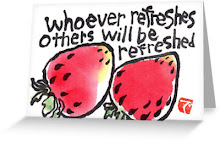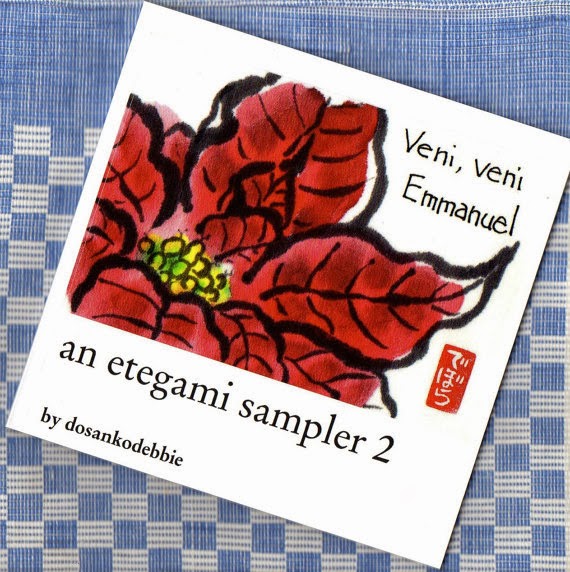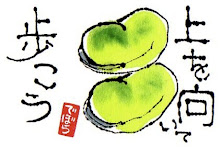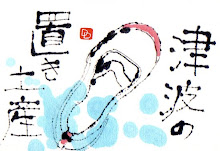
This Waratah blossom was the centerpiece of a flower arrangement that caught my eye a couple weeks ago, and I felt compelled to draw it. The accompanying Japanese words translate to “I love your laughing face.” It is a play on words, based on the similarity of the word "waratah" to the Japanese word for “laughed” (waratta).






























Hi Debbie
ReplyDeleteThe colour and brushstokes have such a lovely quality about it. It's a beautiful piece. Do you have to work quite quickly since the paper is absorbent?
Love it, love your play on words too :). Good to learn another Japanese word.
Evelyn
Thank you, @Evelyn. When using a writing brush for the sumi outline, I move very, veeeery slowly in order to produce the "living lines" that are such an integral part of etegami. (Search my blog for "living lines" if you haven't seen those posts.)
ReplyDeleteBut when I use a bamboo quill pen like I did with this one, I work quickly-- mainly because the ink doesn't last long in the quill pen's shallow groove.
Placing color onto the image is another issue altogether. I do not make "brush strokes." I simply press the brush lightly against the paper and let the colored ink spread. Controlling how far it spreads, and in what direction it spreads, is something I learned by years of trial and error.
With less absorbent washi, my method doesn't work well, so I choose my washi paper carefully, to suit the way I like to paint.
I love the way that you have made the central part of the flower come alive, almost looks like little sea creatures. Thanks for explaining your working methods too.
ReplyDeleteBTW the waratah is the emblem of the state I live in (New South Wales). Carole
LOL @Carole, the petals (if that's what they are) really do look like sea creatures, don't they? What a great comparison.
ReplyDeleteI think this Waratah was imported from Australia. My friend who bought it for the arrangement said she'd never seen one before the day she bought it at the flower shop.
Debbie this is just beautiful! What kind of ink are you using on this?
ReplyDelete@Marlene, the outline is done with sumi ink (as used in Japanese and Chinese calligraphy) and the color is done with gansai paints which are blocks of mineral-based paints that are used in traditional Japanese painting. I have no idea if, or how, gansai is differentfrom western water color paints.
ReplyDelete